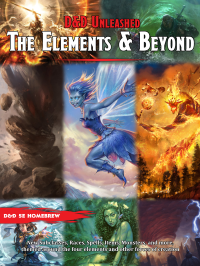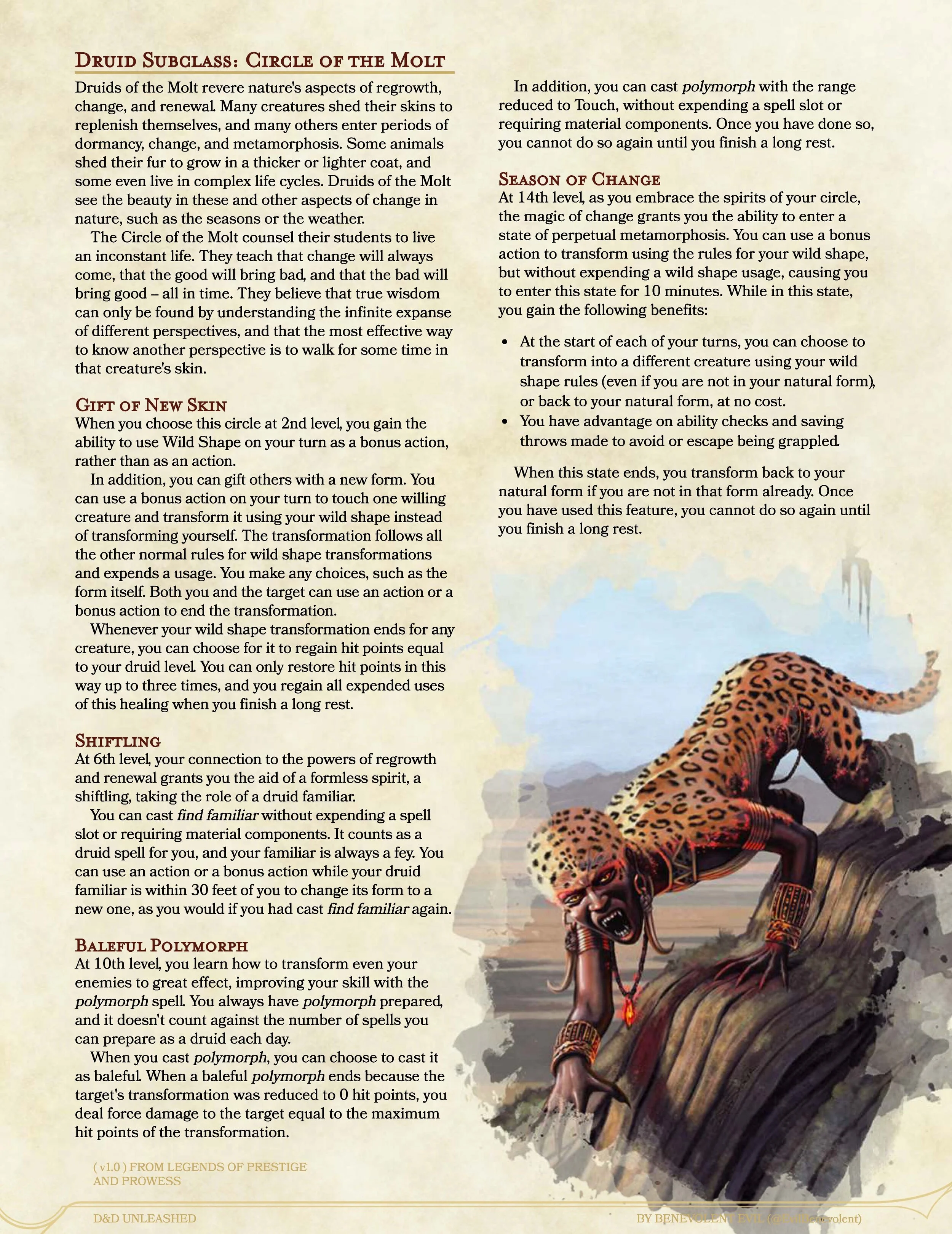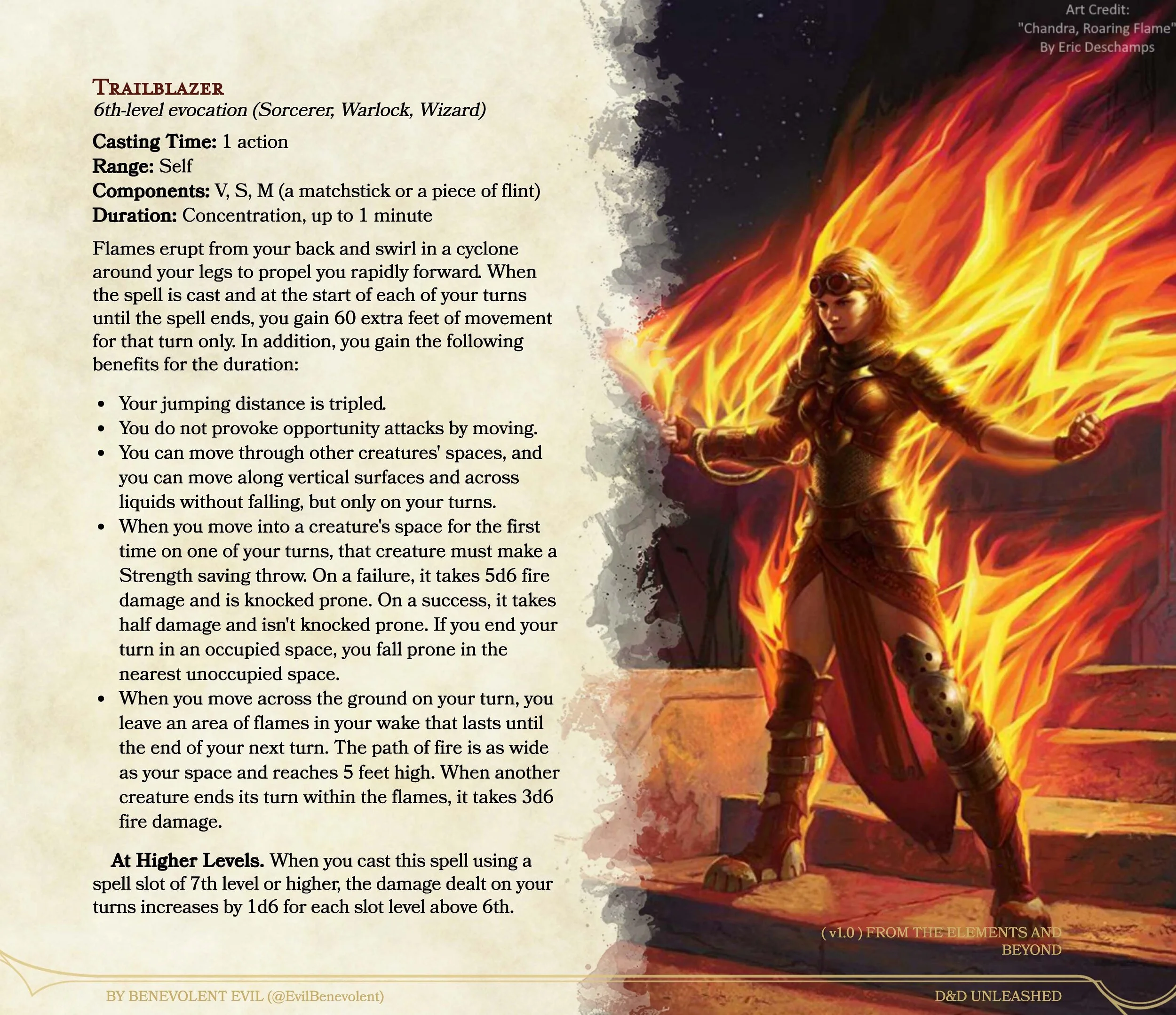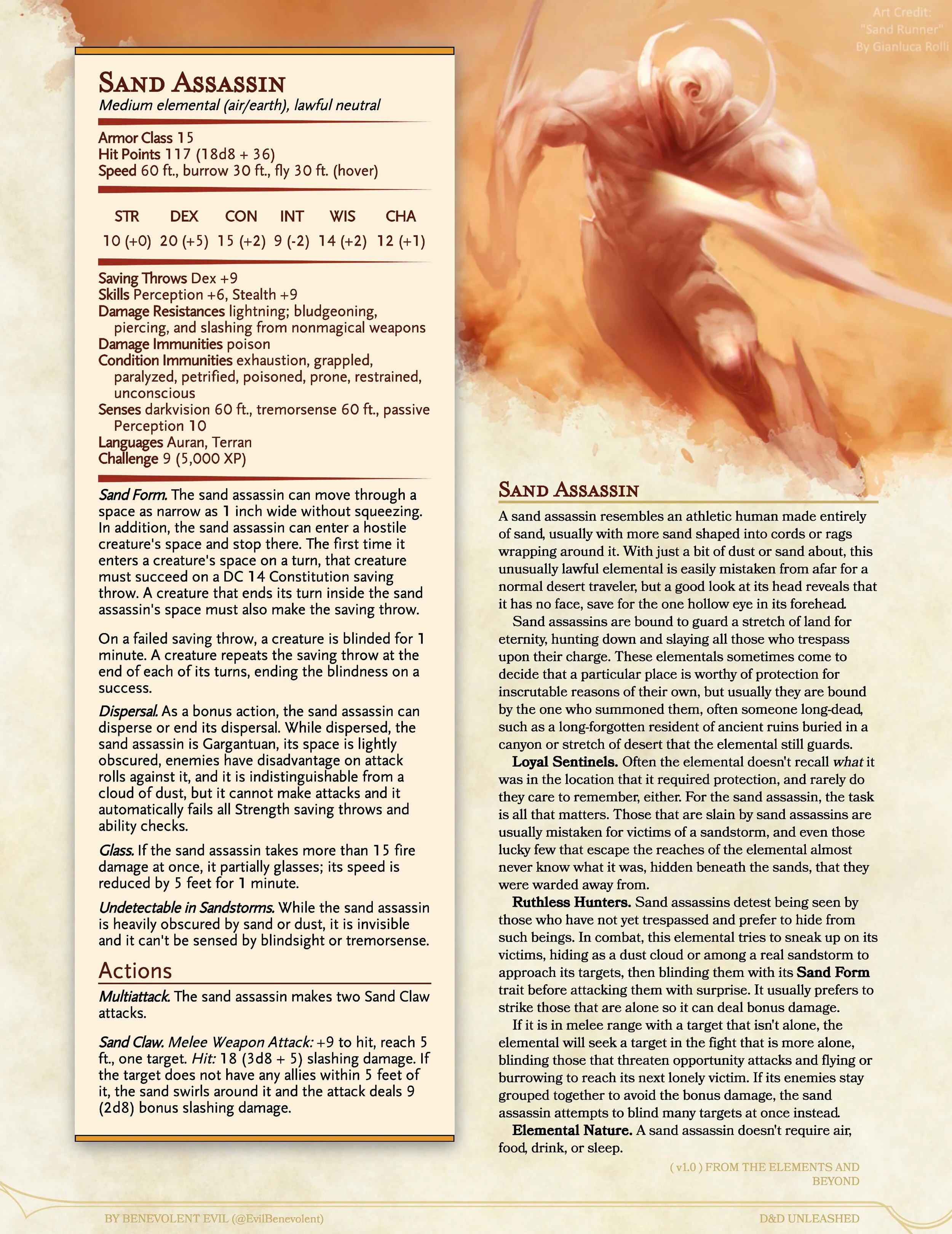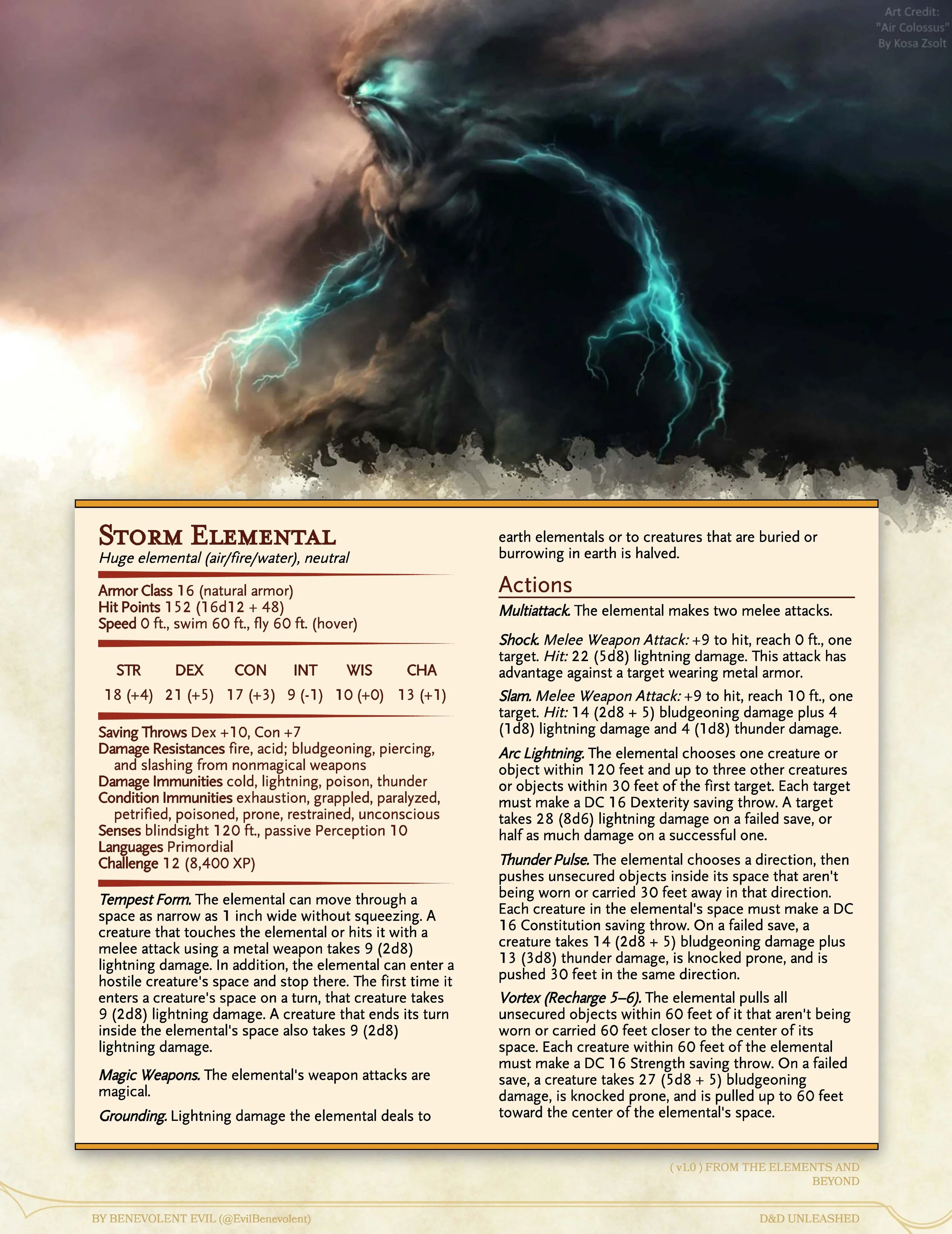New Monster: Ice Elemental
This content can now be found at its most updated version in The Elements and Beyond, a free 246-page compendium that you can download right here, filled with 23 subclasses, 8 spellcasting feats, 134 spells, 213 spell variants, 85 monsters, 30 magic items, 4 races plus 12 new subraces each with racial feats, and even more goodies for both players and DMs!
Links: PDF | D&D Beyond: Ice Elemental
Art Credit: https://www.deviantart.com/njoo/art/Ice-Monolith-38142917
Among the many new elementals coming in The Elements & Beyond, there is a collection of ten CR 6 elementals meant to supplement the four basic elementals at CR 5 (air, earth, fire, and water elementals). These new CR 6 elementals are each composed of two combined elements instead of only one. They display their elements in the monster block as a subtype in parentheses by their elemental type (where something like “orc” or “elf” or “devil” might go). These subtypes matter for certain spells, abilities, and magic items, such as the spell abi-dalzim’s horrid wilting, which is particularly dangerous for water elementals. The first element is the elemental’s primary element, which doesn’t affect much, but might matter for some DMs in some circumstances.
Today’s preview is one of those ten elementals — the ice elemental! It’s got a constant effect on it like the frostbite spell that triggers when a creature touches it or hits it too close, which activates under similar circumstances as the fire elemental’s fire form trait. It can also glide through ice and snow, in a similar fashion to the earth elemental’s earth glide trait. The dual-element hybrid elementals were all designed to parallel the design of the basic CR 5 elementals, with the goal of all the collected 14 elementals looking like a coherent set when viewed together. The dual elementals ability scores are largely based on taking the best of both basic elementals’ ability scores, then reducing them slightly where appropriate. In some cases, like for this ice elemental, the characteristics of the new material were most important — in this case, combining water and the air actually creates a material that is slower and stronger than both. Not every hybrid elemental has a recharge ability, but some do, just like the basic elementals (water and air elementals have a recharge, but earth and fire do not), and those recharge abilities focus on close-ranged effects, in the elemental’s space if possible. The challenge rating, 6, was chosen specifically to be only slightly stronger than the basic elementals for the same reasons.
When The Elements & Beyond releases, you’ll also have access to the rest of the hybrid elementals, including the other nine dual-element elementals at CR 6 (and its all for free, of course):
Ash Elemental: Composed of earth and fire (primary fire), an ash elemental acts like a stronger, weightier fire elemental that doesn’t light things on fire when it burns them.
Fog Elemental: Composed of air and water (primary air), fog elementals roll across cold, wet, or icy landscapes.
Lava Elemental: Composed of earth and fire (primary earth), this slow-moving elemental resembles a smaller, CR6 version of the more-powerful Magma Elemental that’s already been previewed.
Lightning Elemental: Composed of air and fire (primary air), a lightning elemental combines the incredible speed and flight of the air elemental with the dangerous body of a fire elemental, and specializes in harming those with metal armor.
Mud Elemental: Composed of earth and water (primary earth), this elemental resembles a slightly less-tough earth elemental that can easily grapple and restrain targets using its sticky mud.
Sand Elemental: Composed of air and earth (no primary, as they’re opposed elements), sand elementals share many traits with their smaller-but-deadlier relatives, the previously-previewed Sand Assassin. They range across deserts, blinding foes with sand and dust before scouring their flesh.
Slime Elemental: Composed of earth and water (primary water), this elemental is made of a powerful acid. It flows and acts like an ooze, dissolving anything that touches it.
Smoke Elemental: Composed of air and fire (primary fire), these elementals are burning hot and noxious to inhale, giving them the ability to poison and burn their targets at the same time. Their effects resemble those of a stinking cloud spell.
Steam Elemental: Composed of fire and water (no primary, as they’re opposed elements), the flying steam elementals scald anything they touch with their pressurized bodies, burning without lighting fires.
Of course, as elementals, these creatures can all be summoned by a wizard or a druid using the conjure elemental spell, though it will require a 6th-level slot instead of 5th-level. Since the type of elemental summoned by that spell is generally controlled by the choice of material components, those components affect the summoning of these elementals too. For example, you’ll want to use ice to summon an ice elemental, and mist or fog to summon a fog elemental. Just mix water and air without concern, and you won’t be able to guarantee which elemental is summoned. Of course that can make a lava elemental very difficult to summon — but perhaps your DM will let you use molten metal as a component instead of molten rock.
Links: PDF | D&D Beyond: Ice Elemental




